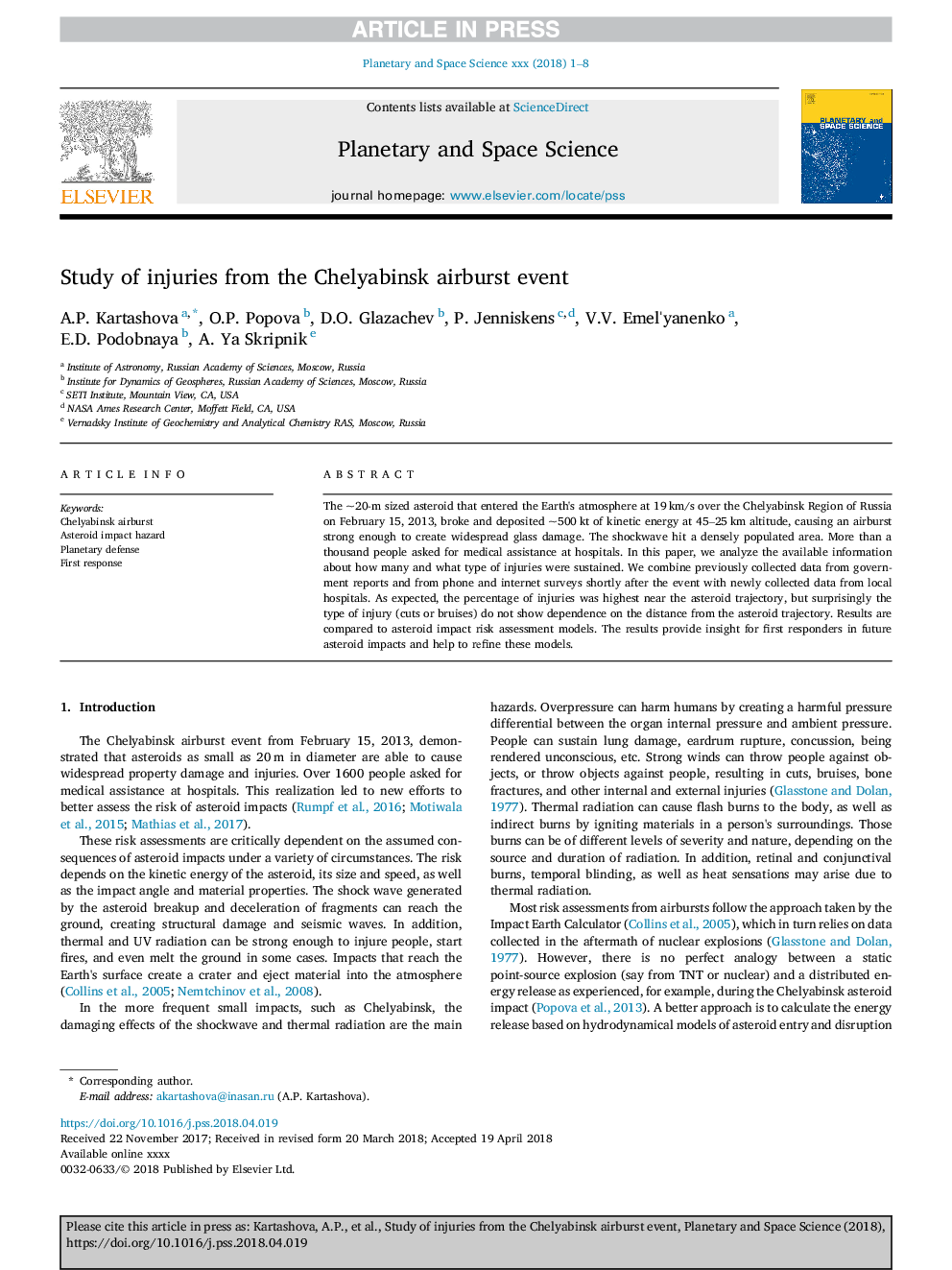| Article ID | Journal | Published Year | Pages | File Type |
|---|---|---|---|---|
| 8142035 | Planetary and Space Science | 2018 | 8 Pages |
Abstract
The â¼20-m sized asteroid that entered the Earth's atmosphere at 19â¯km/s over the Chelyabinsk Region of Russia on February 15, 2013, broke and deposited â¼500â¯kt of kinetic energy at 45-25â¯km altitude, causing an airburst strong enough to create widespread glass damage. The shockwave hit a densely populated area. More than a thousand people asked for medical assistance at hospitals. In this paper, we analyze the available information about how many and what type of injuries were sustained. We combine previously collected data from government reports and from phone and internet surveys shortly after the event with newly collected data from local hospitals. As expected, the percentage of injuries was highest near the asteroid trajectory, but surprisingly the type of injury (cuts or bruises) do not show dependence on the distance from the asteroid trajectory. Results are compared to asteroid impact risk assessment models. The results provide insight for first responders in future asteroid impacts and help to rеfine these models.
Keywords
Related Topics
Physical Sciences and Engineering
Earth and Planetary Sciences
Geophysics
Authors
A.P. Kartashova, O.P. Popova, D.O. Glazachev, P. Jenniskens, V.V. EmelËyanenko, Ð.D. Podobnaya, A. Ya Skripnik,
